There’s a clear correlation between race and household income in the area and the number of chemical plants sited nearby. The 4th and 5th districts, which contain more plants than any other districts in St. James, are home to populations that are 64 percent and 90 percent Black, respectively, with nearly a third of residents living below the poverty line.
“The Civil Rights Act and the Louisiana Constitution are supposed to protect Black communities from this type of environmental racism. They have not in Cancer Alley.”
A 2014 land use plan adopted by the St. James Parish Council exacerbated that disparity when it rezoned residential areas in the 4th and 5th districts as “residential / future industrial” to allow for further development.
“The Civil Rights Act and the Louisiana Constitution are supposed to protect Black communities from this type of environmental racism. They have not in Cancer Alley,” Lavigne said. “Our agencies are rubber stamping every permit that comes across their desks.”
Less than two years after the land use plan was adopted, the local government sold St. James High School, where Lavigne taught for 38 years, to a chemical corporation. Teachers and students — who learned of the sale only after it was complete — were forced to relocate to other districts.
A chemical plant located in a region nicknamed “Cancer Alley” in St. James Parish, Louisiana.
It was then that Lavigne, who decided to retire, found herself reflecting on the changes she’d seen in the area — from an increase in the number of children with asthma and developmental disabilities in her classroom to the growing number of friends and family with cancers, respiratory issues and other illnesses.
“We saw a lot of people getting sick and a lot of people dying. But we didn’t know where it was coming from at that time,” she said. “We didn’t have a clue that it was coming from industry. And I thought the world was about to come to an end because we had so many people getting sick. I thought that the sun might be wiped out after a while. That’s the way I felt.
“But I was wrong. It was not the end of the world — it was the plants.”
***
Lavigne herself was diagnosed with autoimmune hepatitis in 2016, and has since learned that she has elevated levels of aluminum and lead in her bloodstream. The turning point came for her when she researched the disease and discovered that it can be triggered by environmental toxins. As she continued to look into the environmental and health impacts of the industries that surrounded her, she began attending meetings of a local nonprofit organization focused on curbing the pollution.
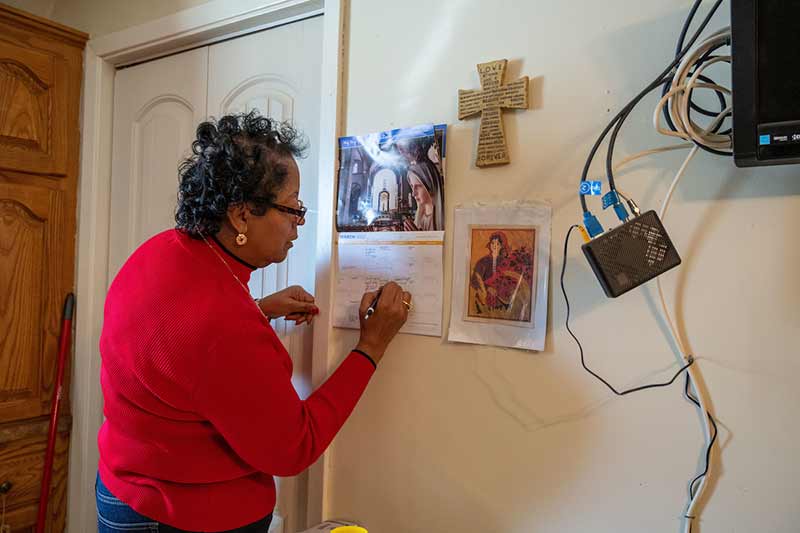
Lavigne writes down her appointments on a calendar in the kitchen at her home.
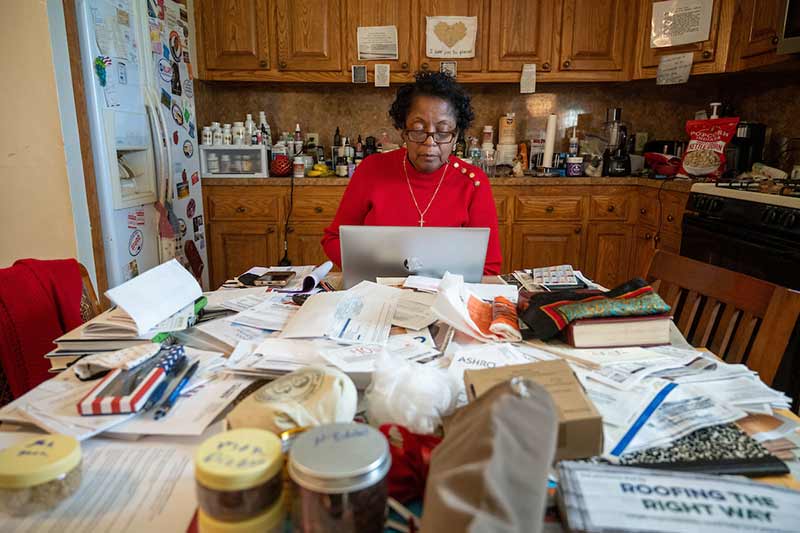
Lavigne works on her computer in her kitchen.
But two years later, another corporation received the greenlight to build a multibillion-dollar chemical plant in St. James Parish, two miles from Lavigne’s home. While many in the community believed that fighting the proposed facility was a lost cause, Lavigne felt called by God to take action.
“I would sit on my porch and read my Bible. I was depressed because I thought we had to move, and I didn’t know where I was going to move,” she said. “And that’s when I prayed. I sat on this porch and watched the birds and prayed.
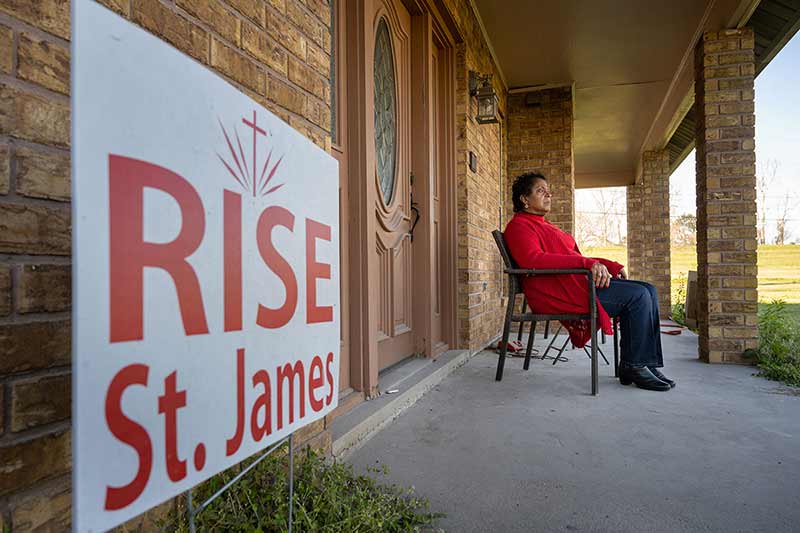
Lavigne sits on the front porch at her home.
“I went to him and asked him what I should do, and I waited for his answer. When his voice spoke to me, I cried. Because it was so amazing. And that’s when I got my answer — he told me to fight.”
***
Lavigne launched Rise St. James with an informal gathering of 10 people in her living room. She now manages a small staff and more than 20 regular volunteers.
Chasity White, a fellow resident of St. James Parish’s 5th district, has been with her from the beginning.
“Sharon has been a source of hope and inspiration to both myself and the community. She is always working to help the people of St. James. And when she speaks out on behalf of them, she speaks passionately.” —Chasity White, resident of St. James Parish
White first met Lavigne when she was 15 and a student in Lavigne’s high school. When Lavigne found out that White wanted to join the pep squad but didn’t have transportation, she volunteered to drive her to every football game that year. Along the way, the two became friends.
“Sharon has been a source of hope and inspiration to both myself and the community,” White said. “She is always working to help the people of St. James. And when she speaks out on behalf of them, she speaks passionately.”
White now lives just down the street from the former St. James High School. Her son was attending the school and was able to walk there at the time it was sold. She said she joined Rise St. James, in part, because she wants her children to be able to have the same experiences and sense of heritage she had growing up.
“St. James means a lot to me, because I have history here. My granddad’s store is still operating after 50 years,” White said. “And people may ask the question, ‘Well, why fight?’ Why fight? Because this is my home. This is my roots. This is where I grew up. This is where love is, where family is.”
***
Lavigne and the members of Rise St. James have spoken out at town hall and parish council meetings, organized a march from New Orleans to the governor’s mansion in Baton Rouge, allied with other environmental justice organizations and produced signs, ads and reports on the negative effects of the industry’s pollutants.
They had their first win when they successfully campaigned against a proposed $1.25 billion chemical plant from Wanhua Chemical. In September 2019, the corporation withdrew its land use application.
Lavigne and members of Rise St. James attend a hearing in Baton Rouge, as part of their lawsuit against Formosa Plastics.
But the organization continues to fight another Goliath — the construction of a $9.4 billion Formosa Plastics complex that would double the level of toxic emissions in St. James Parish.
Along with their grassroots efforts, Rise St. James and their community partners have initiated a lawsuit against Formosa in response to its repeated failure to meet Environmental Protection Agency standards.
In recognition of her work, Lavigne received the Goldman Environmental Prize in 2021 and has been named to the Forbes “50 over 50” impact list.
Lavigne’s father — an activist in his own right — was an inspiration and an early role model for her. He served as president of the local chapter of the NAACP and worked to integrate St. James schools in the 1960s. He liked to remind her that God has a plan, she said.
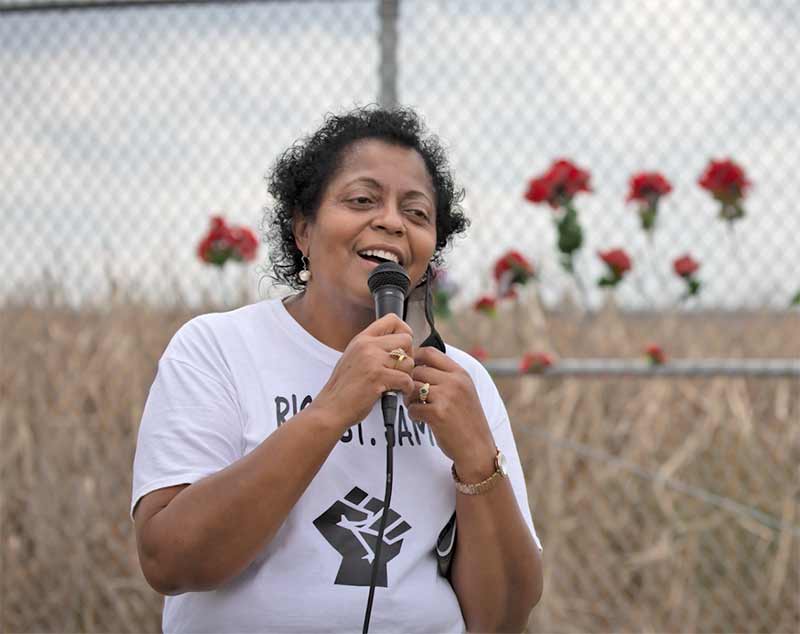
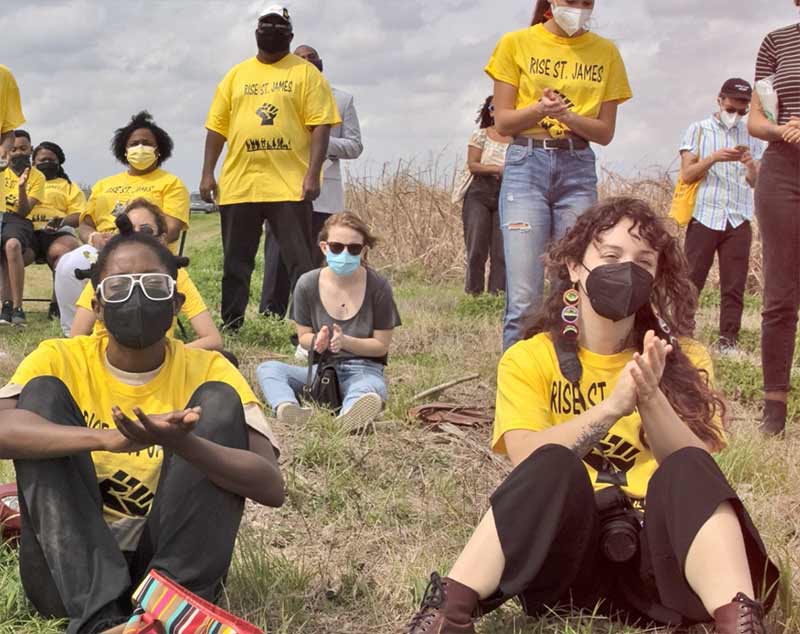
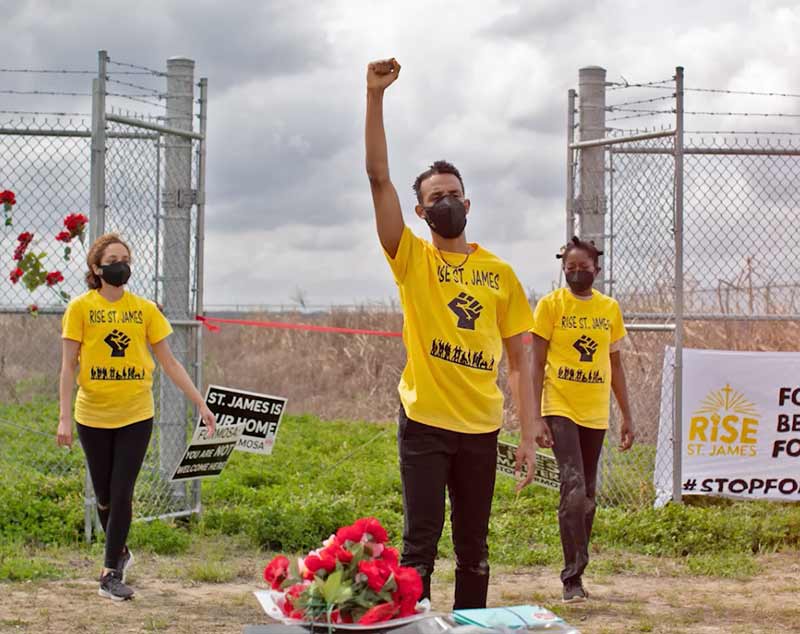
Lavigne speaks to community members at the Rise St. James’ first annual African American Celebration at the gravesite of enslaved ancestors at the Buena Vista Cemetery. The land was purchased by Formosa Plastics for a proposed petrochemical complex. (Photos: Goldman Environmental Prize)
“He was a fighter, and he always walked by faith,” she said. “He said his prayers, and he always said prayer changes things. And I hear his voice all the time, telling me prayer changes things. And I can see it. I see it.”
As she continues to fight — and pray — Lavigne has faith that they will defeat Formosa’s proposal, too, and that the tides are turning as more people become aware of the disproportionate impact of industrial pollution on marginalized communities. Last fall, she welcomed EPA Administrator Michael Regan to St. James Parish, and she will be traveling to Washington, D.C., in June on behalf of Rise St. James.
“So, we have a lot of work to do. Rise St. James is cut out to do work. And Rise St. James will make a difference in St. James Parish, because we are here to save the lives of the people.”
Ultimately, her goal is to restore the health of their community and its members.
“We want to rebuild St. James Parish, especially the 5th district. We want our young people to want to live here; we want to build more homes here,” she said. “We want to get to the point where we have clean air, where we don’t have to buy bottled water, we can drink our own water. And we want to vote out the public officials that are not helping us.
“So, we have a lot of work to do. Rise St. James is cut out to do work. And Rise St. James will make a difference in St. James Parish, because we are here to save the lives of the people.”
Produced by the Office of Public Affairs and Communications
- Writer: Carrie Gates
- Videography: Zack Dudka
- Photography: Barbara Johnston
[ad_2]
Originally Appeared Here